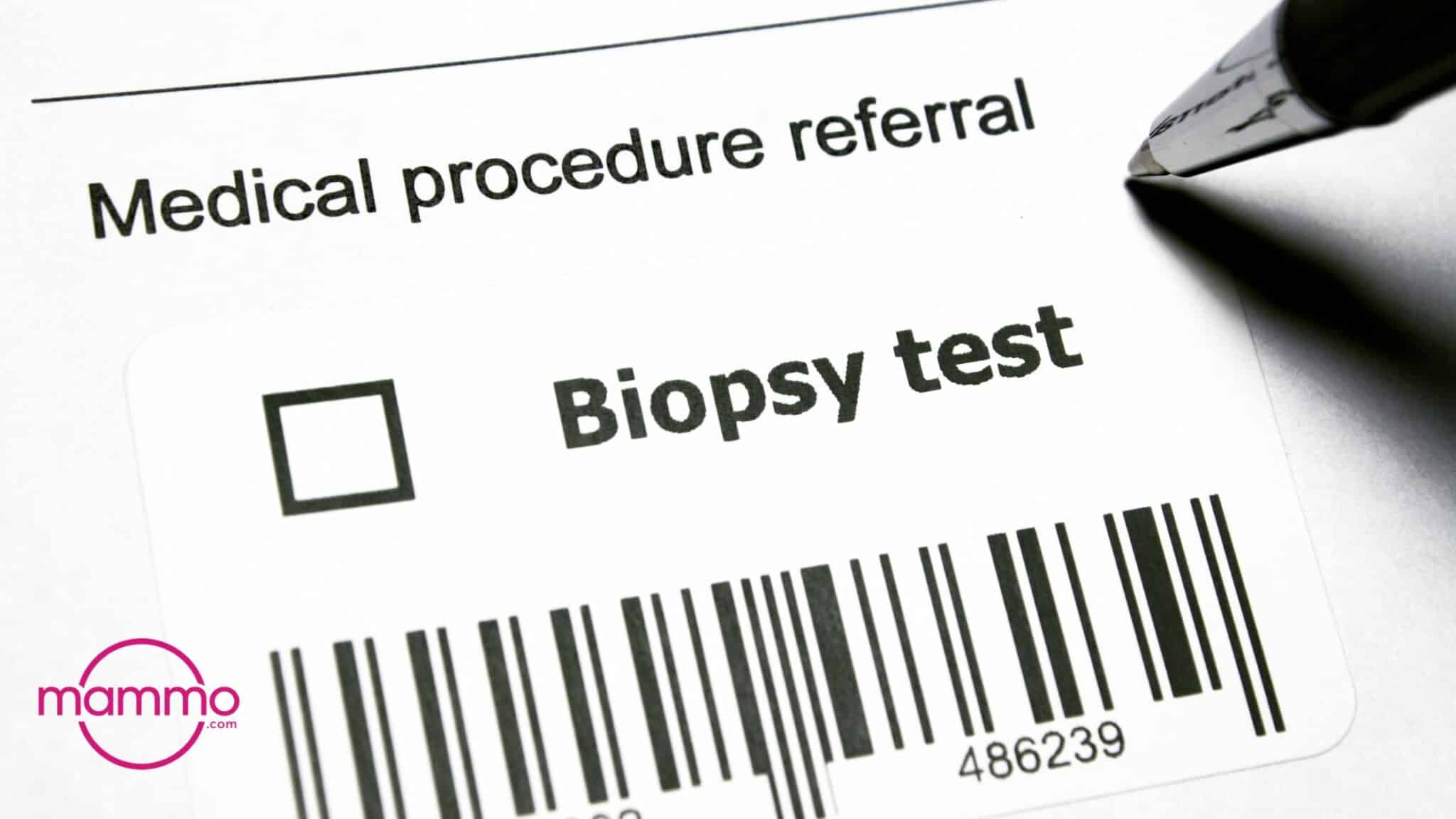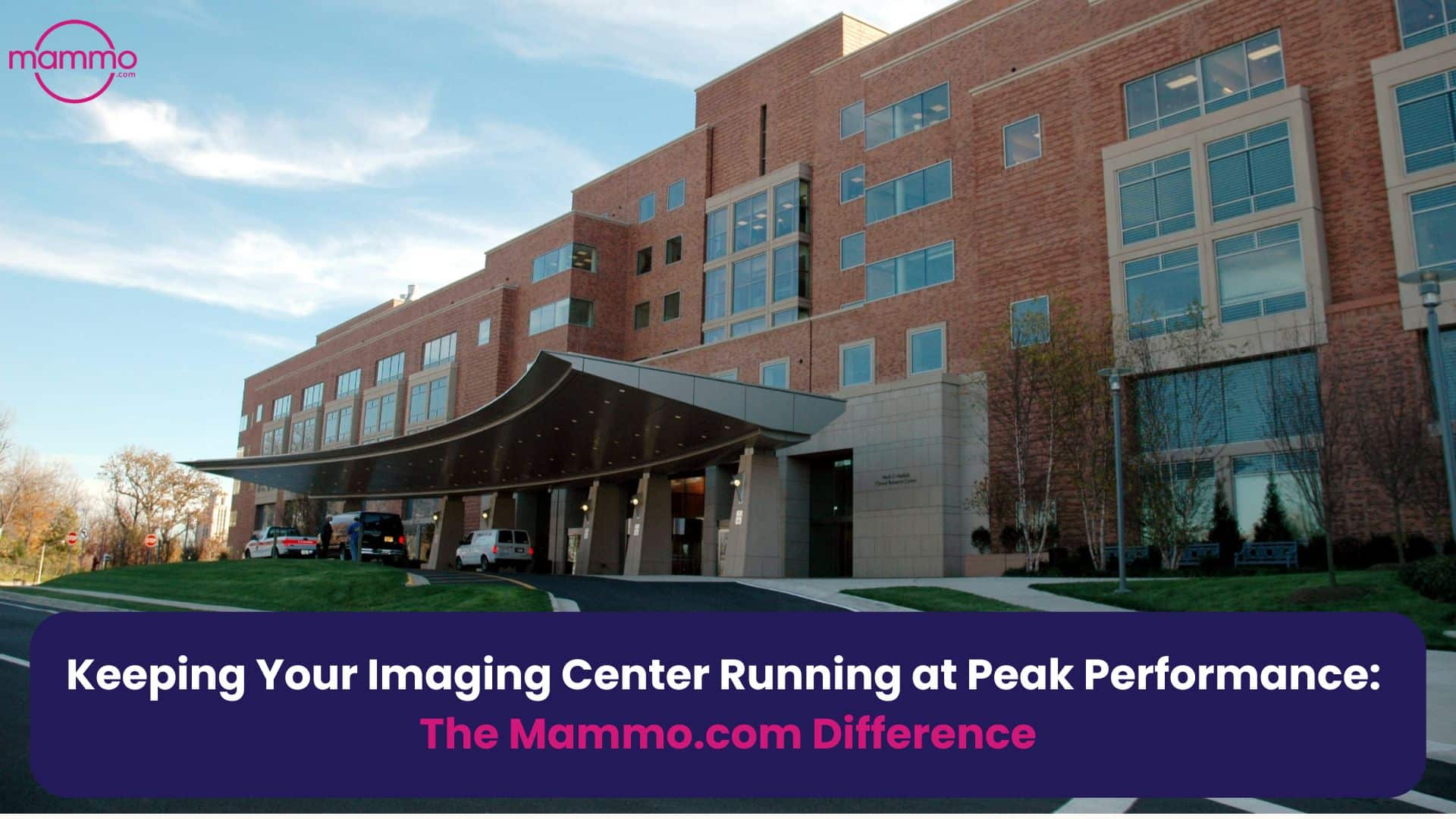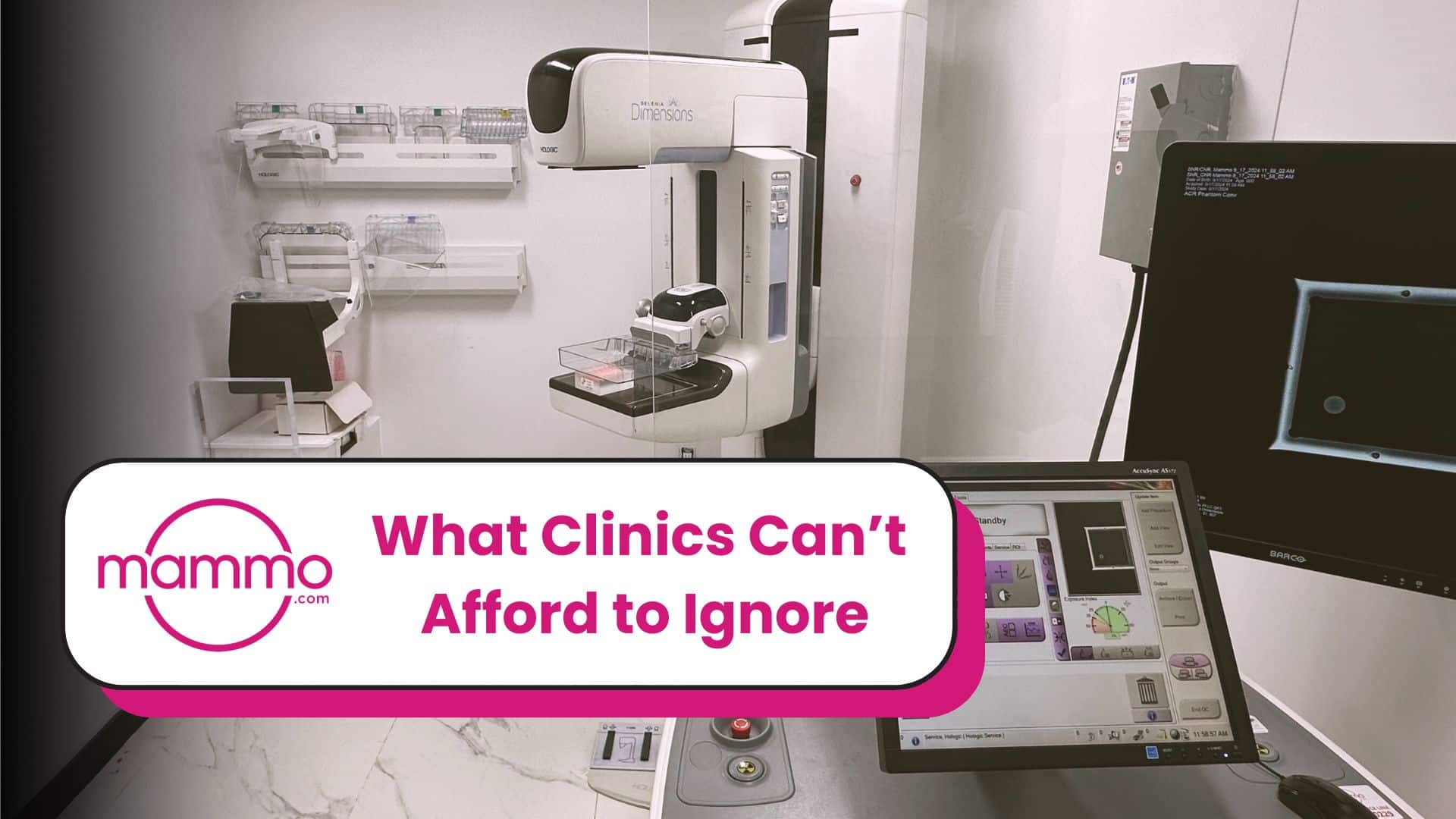What is Breast Biopsy?
A breast biopsy is a medical procedure that involves removing and examining a tiny sample of breast tissue to determine whether it is malignant. This treatment is necessary for identifying breast anomalies, such as lumps or suspicious regions discovered during imaging tests. By examining the tissue sample, doctors can determine if a patient has breast cancer. They can also define the type and stage of the cancer, which is critical for designing an effective treatment strategy.
Pre-Biopsy Procedures
Prior to a breast biopsy, patients often undergo several pre-procedure measures. The initial consultation with a healthcare professional includes discussing medical history, performing a physical examination, and evaluating past imaging tests such as mammography screenings. Mammograms are very helpful during the breast biopsy, as they can precisely determine the exact location of the issue.
Types of Breast Biopsies
There are various types of breast biopsies, each with updated technology to increase accuracy and patient comfort.
Fine-Needle Aspiration
Fine-Needle Aspiration (FNA) is a minimally invasive procedure that involves inserting a small needle into the suspicious area to remove fluid or cells. The procedure is relatively short and generally performed under local anesthetic. FNA is very effective in distinguishing between cysts and solid masses, providing quick and valuable information. However, its diagnostic accuracy is limited compared to other biopsy procedures, as the sample size is smaller and may not capture the entire area of suspicious tissue, necessitating further investigation.
Core Needle Biopsy
Core Needle Biopsy (CNB) involves removing tiny cylinders of tissue from a suspicious location using a larger hollow needle. This approach provides more tissue for examination, resulting in greater diagnostic accuracy compared to FNA. The procedure is usually conducted under local anesthetic and guided by imaging modalities like ultrasonography or stereotactic mammography. CNB allows for a more thorough study of tissue structure and cellular features, making it the preferred method for identifying a wide range of breast abnormalities, such as suspicious lumps and microcalcifications.
Stereotactic Biopsy
A stereotactic biopsy involves using mammography to accurately locate and guide a needle to a suspicious region within the breast. This approach is particularly useful for sampling microcalcifications and other abnormalities that are difficult to detect during a physical examination. During the procedure, patients lie face down on a specially built table, and the treatment is conducted under local anesthesia.
The stereotactic biopsy employs a three-dimensional coordinate system to pinpoint the precise position of abnormal tissue, significantly improving the accuracy and efficiency of the biopsy. This method is especially beneficial for accessing difficult-to-reach locations, ensuring that the most relevant tissue samples are obtained for analysis. Mammo.com’s Hologic Dimensions 3D systems can provide stereotactic biopsy options.
Vacuum-Assisted Biopsy
Vacuum-Assisted Biopsy (VAB) involves using a vacuum-powered device to gather multiple tissue samples through a single incision. This breast biopsy method provides larger and more contiguous tissue samples, which enhances diagnostic accuracy. It is less intrusive than a surgical biopsy and can be performed under local anesthesia, often guided by ultrasound or MRI.
The continuous suction feature of VAB allows for the extraction of larger tissue samples without the need for multiple needle insertions, thereby minimizing patient discomfort and reducing procedure time. This method significantly boosts diagnostic accuracy by ensuring that comprehensive tissue samples are obtained, improving the reliability of the biopsy results.
Surgical Biopsy
Surgical biopsy involves removing a suspicious region through an incision in the breast. This approach is usually reserved for situations when needle biopsies are inconclusive, or the suspect region is difficult to reach. While more intrusive, it yields a thorough tissue sample for diagnosis. Surgical biopsy can be performed in two ways:
• Excisional Biopsy: Removes the entire lump or suspicious region.
• Incisional Biopsy: Removes only a portion of the tissue.
This procedure provides the most definitive diagnosis but requires more recuperation time and carries greater risks than needle biopsies, such as infection, scarring, and changes in breast appearance.
What Are The Risks of Breast Biopsies?
Breast biopsies are typically safe but can have some risks. The dangers associated with breast biopsies can vary in severity:
• Infection: Antibiotics may be required to treat an infection at the biopsy site. Severe infections may require additional medical care or hospitalization for proper management.
• Bleeding and Bruising: Excessive bleeding and bruising can be uncomfortable and may take time to heal. In certain circumstances, a hematoma may develop, needing drainage or further medical treatments. • Pain and Discomfort: Chronic pain or discomfort can impair daily activities and quality of life. To manage this discomfort, a doctor may prescribe pain relievers or medications.
• Scarring: Visible scarring can affect the appearance of the breast and cause anxiety for some people. This may lead to the consideration of cosmetic surgery to improve appearance.
• Changes in Breast Appearance: Taking larger tissue samples can cause structural alterations or abnormalities in the breast, changing its shape and symmetry. These changes can be distressing and may need additional medical or cosmetic treatments.
• Anesthesia Reactions: Although uncommon, reactions to local anesthetics, such as allergic reactions or systemic effects, can occur and may require immediate medical intervention for proper management.
Technological Advancements
Many technological advancements have substantially revolutionized the landscape of breast biopsy procedures:
AI and Machine Learning
Artificial intelligence and machine learning algorithms help pathologists improve the quality of biopsy sample analysis. These technologies can identify small anomalies that the human eye might overlook, allowing for earlier and more accurate diagnoses. Predictive analytics enabled by machine learning can also forecast biopsy outcomes, allowing for more tailored patient care, and avoiding the need for more invasive treatments. Overall, artificial intelligence and machine learning have transformed the diagnostic process, making it more efficient and reliable.
Minimally Invasive Techniques
The use of robotic assistance in biopsy procedures has significantly increased accuracy while reducing invasiveness. Robotic devices provide more controlled and stable needle placements, lowering the chance of errors and improving patient safety. These methods enable precise targeting of suspicious areas, resulting in smaller incisions, less tissue damage, and faster recovery for patients. The increased precision also means that fewer samples are required, reducing overall pain and procedure duration.
Real-Time Analysis
On-site pathology, powered by modern imaging and processing technology, enables real-time examination of biopsy samples. Pathologists can evaluate tissue samples during the biopsy procedure and provide immediate feedback to the medical team. This instantaneous analysis shortens the wait time for results, which is especially important for anxious patients awaiting a diagnosis. Real-time analysis ensures that adequate and reliable tissue samples are taken on the first attempt, reducing the need for repeat procedures, and improving overall diagnostic efficiency.
3D Imaging
Three-dimensional imaging methods, such as 3D mammography, provide enhanced visualization of breast tissues. This technology offers a detailed and comprehensive view of suspicious areas, allowing for precise needle placement during breast biopsies. The ability to visualize breast tissue in three dimensions increases the accuracy of biopsies by enabling the exact identification and extent of abnormalities. This leads to more accurate diagnoses and better informed treatment decisions, ultimately improving patient outcomes.
Newest Technological Solutions
Many technical developments have substantially revolutionized the landscape of breast biopsy operations, with Hologic’s devices leading the way.
The Hologic Trident is a sophisticated device that delivers instantaneous, high-quality imaging of biopsy samples. This innovative device guarantees that biopsy samples include the desired tissue, hence avoiding the need for further operations.
The Trident system works seamlessly with other Hologic technologies, increasing workflow efficiency and accuracy during the biopsy procedure. The Hologic Trident offers the following advantages:
• Immediate Specimen Verification: The system enables high-quality, instantaneous imaging of biopsy specimens, guaranteeing that the proper tissue is collected. This reduces the need for additional biopsies, saves time, and alleviates patient suffering.
• High-Resolution Imaging: This device provides high-resolution imaging, allowing for precise verification of biopsy samples. The high resolution improves diagnostic results and minimizes the likelihood of missing abnormal tissue.
• Workflow Efficiency: It integrates smoothly with other Hologic systems, enhancing workflow efficiency during the biopsy procedure. This integration enables faster verification and processing, optimizing the entire workflow.
The Hologic Affirm system is a breast biopsy guiding device that improves the precision and accuracy of stereotactic and three-dimensional biopsies. It enables real-time imaging and targeting, ensuring that the needle is precisely positioned in the suspicious region.
This technique is especially effective for performing biopsies on difficult-to-reach lesions, which boosts diagnostic confidence and reduces patient anxiety. The Hologic Affirm offers the following advantages:
• Enhanced Precision: The system provides real-time, 3D-guided imagery to enable accurate needle placement during biopsies. This precision is critical for pinpointing tiny or difficult-to-reach lesions, thereby increasing diagnostic accuracy.
• Versatility: It supports a wide range of biopsy procedures, including stereotactic and 3D-guided biopsies, making it adaptable to diverse clinical needs. This versatility makes it an effective tool in various breast biopsy settings.
• Patient Comfort: The system prioritizes patient comfort by optimizing operations and reducing biopsy times. Improved patient experience can lead to increased compliance with diagnostic recommendations.
The Hologic Brevera system transforms the breast biopsy experience by merging tissue capture, real-time imaging, and sample verification on a single integrated platform. This vacuum-assisted biopsy technology enables continuous imaging during the process, ensuring that adequate and accurate tissue samples are obtained.
The Brevera technology dramatically shortens operation time and improves patient comfort by reducing the number of insertions and the total duration of the biopsy. The Hologic Brevera has the following advantages:
• Integrated Tissue Acquisition and Imaging: The system integrates tissue collection, real-time imaging, and sample verification into a single platform. This integration significantly reduces procedural times while also improving tissue sample accuracy.
• Continuous Imaging: Continuous imaging during the procedure ensures correct tissue sampling, reducing the need for repeat insertions and improving diagnostic reliability. • Enhanced Workflow: This technology automates various stages of the biopsy process, reducing the workload on healthcare staff and speeding up diagnostics. This efficiency can result in faster diagnosis and treatment planning.
• Enhanced Workflow: This technology automates various stages of the biopsy process, reducing the workload on healthcare staff and speeding up diagnostics. This efficiency can result in faster diagnosis and treatment planning.
Patient Experience and Aftercare
Understanding the total patient experience and follow-up is critical for people having a breast biopsy.
During the Procedure
During the procedure, patients might expect different feelings based on the kind of biopsy. Most biopsies are conducted under local anesthetic, and patients may feel pressure but should not be in discomfort. The treatments are typically brief, lasting from 15 minutes to an hour.
Post-Procedure Care
Following the biopsy, patients are given detailed care instructions, including how to handle any discomfort, or swelling at the biopsy site. Common advice includes using ice packs, using over-the-counter pain medicines, and keeping the area clean and dry. Patients should refrain from intense activities for a few days to facilitate optimal recovery.
Emotional Support
Undergoing a breast biopsy can be emotionally challenging. Patients are encouraged to seek support from healthcare providers or support groups. Emotional well-being is as important as physical recovery, and accessing resources for mental health support can make a significant difference.
Precision and Support with Mammo.com
Breast biopsy treatments have made remarkable progress, becoming more accurate, less invasive, and faster than ever before. These advancements have significantly improved the diagnostic process, enabling patients to receive quicker and more precise results. As technology continues to advance, the future of breast biopsies promises even further improvements, thereby enhancing patient outcomes and experiences. Understanding the different techniques and procedures and knowing what patients can expect before undergoing a breast biopsy, can provide reassurance and confidence to them on the path to diagnosis and treatment.
At Mammo.com, we are committed to supporting imaging centers and healthcare providers with top-tier equipment. We have the Hologic Brevera, Trident, and Affirm in stock and available for purchase, ensuring you have access to the latest technology for your biopsy procedures. Contact our team today to learn more about how we can help you elevate your practice and provide the best care for your patients. Email us directly at hello@mammo.com to learn more.
Explore our carefully selected range of biopsy devices to find the perfect fit for your healthcare facility.




